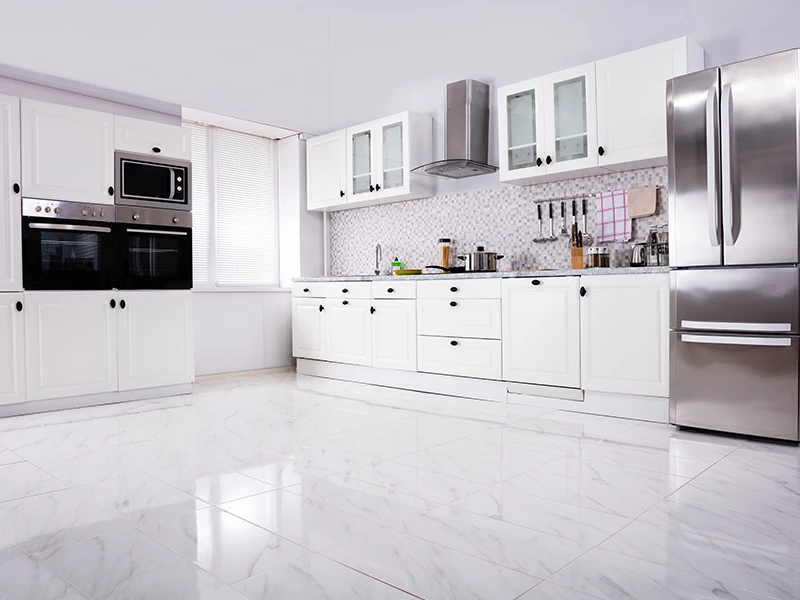Features and Benefits of Kitchen Flooring
Let us understand the kitchen flooring features and benefits through the common materials homeowners use –
They are hard, water-resistant, and easy to clean, which makes them ideal for kitchen flooring. Tiles come in a range of colors, patterns, and designs to suit any type of home interior. However, they may crack if you drop heavy items and can gather grime in the grout lines.
Solid wood kitchen flooring adds an instant appeal to your kitchen’s design. It is great for a classic look but may require frequent maintenance. Without it, the floor can get scratches, stains, and warp in humid weather.
They add a modern look to the kitchen flooring and are highly affordable if you are on a budget. Laminate floors are highly resistant to wear and tear, but you cannot refinish them.
Vinyl floors are budget-friendly, water-resistant, and easily installable alternatives to wood floors. However, they need a flawless subfloor underneath.
Marble floors with organic patterns add sophistication to the kitchen interiors. They require frequent maintenance and sealing to prevent scratches and stains.
While concrete is naturally cold, it can be very sturdy and useful in some of the busiest kitchens. It is easy to apply but may need some polishing and sealing to prevent wear and tear.
If you want granite or marble floors on a lower budget, consider vitrified tiles, a cheap kitchen flooring option. They come in a wide range of textures and resist waterlogging and staining.
